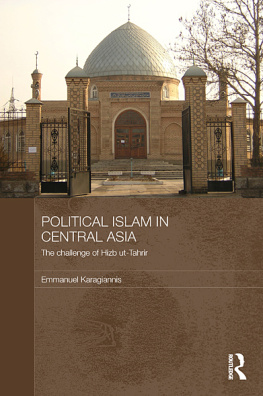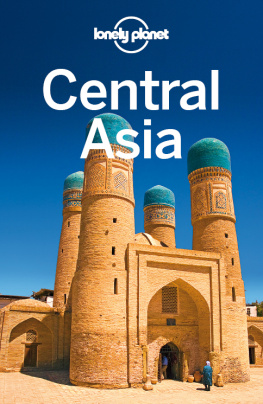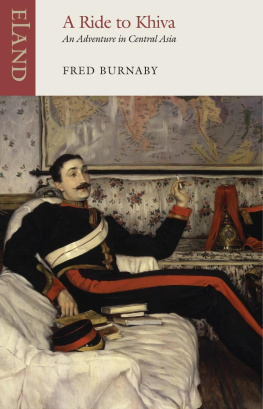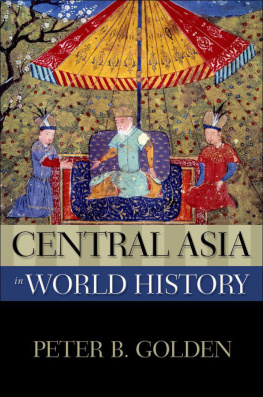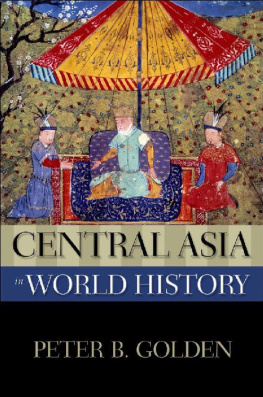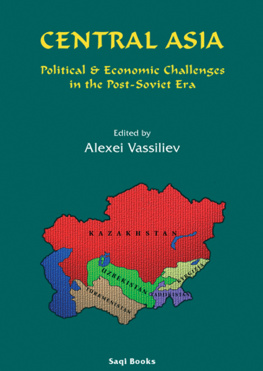Ármin Vámbéry - Sketches of Central Asia (1868)
Here you can read online Ármin Vámbéry - Sketches of Central Asia (1868) full text of the book (entire story) in english for free. Download pdf and epub, get meaning, cover and reviews about this ebook. year: 2019, publisher: Bod Third Party Titles, genre: Non-fiction. Description of the work, (preface) as well as reviews are available. Best literature library LitArk.com created for fans of good reading and offers a wide selection of genres:
Romance novel
Science fiction
Adventure
Detective
Science
History
Home and family
Prose
Art
Politics
Computer
Non-fiction
Religion
Business
Children
Humor
Choose a favorite category and find really read worthwhile books. Enjoy immersion in the world of imagination, feel the emotions of the characters or learn something new for yourself, make an fascinating discovery.

- Book:Sketches of Central Asia (1868)
- Author:
- Publisher:Bod Third Party Titles
- Genre:
- Year:2019
- Rating:3 / 5
- Favourites:Add to favourites
- Your mark:
- 60
- 1
- 2
- 3
- 4
- 5
Sketches of Central Asia (1868): summary, description and annotation
We offer to read an annotation, description, summary or preface (depends on what the author of the book "Sketches of Central Asia (1868)" wrote himself). If you haven't found the necessary information about the book — write in the comments, we will try to find it.
Sketches of Central Asia (1868) — read online for free the complete book (whole text) full work
Below is the text of the book, divided by pages. System saving the place of the last page read, allows you to conveniently read the book "Sketches of Central Asia (1868)" online for free, without having to search again every time where you left off. Put a bookmark, and you can go to the page where you finished reading at any time.
Font size:
Interval:
Bookmark:

OF
CENTRAL ASIA.
UNIVERSITY OF PESTH
J. B. LIPPINCOTT & CO.
Wm. H. ALLEN & CO., 13, WATERLOO PLACE,
PALL MALL, LONDON.
2nd December, 1867.
| PAGE |
| CHAPTER I. |
| Dervishes and Hadjis |
| CHAPTER II. |
| Recollections of my Dervish Life |
| CHAPTER III. |
| Amongst the Turkomans |
| CHAPTER IV. |
| The Caravan in the Desert |
| CHAPTER V. |
| The Tent and its Inhabitants |
| CHAPTER VI. |
| The Court of Khiva |
| CHAPTER VII. |
| Joy and Sorrow |
| CHAPTER VIII. |
| House, Food, and Dress |
| CHAPTER IX. |
| From Khiva to Kungrat and back |
| CHAPTER X. |
| My Tartar |
| CHAPTER XI. |
| The Round of Life in Bokhara |
| CHAPTER XII. |
| Bokhara, the Head Quarters of Mohamedanism |
| CHAPTER XIII. |
| The Slave Trade and Slave Life in Central Asia |
| CHAPTER XIV. |
| Productive Power of the Three Oasis-Countries of Turkestan |
| CHAPTER XV. |
| On the Ancient History of Bokhara |
| CHAPTER XVI. |
| Ethnographical Sketch of the Turanian and Iranian Races of Central Asia |
| CHAPTER XVII. |
| Iranians |
| CHAPTER XVIII. |
| Literature in Central Asia |
| CHAPTER XIX. |
| Rivalry between Russia and England in Central Asia |
Font size:
Interval:
Bookmark:
Similar books «Sketches of Central Asia (1868)»
Look at similar books to Sketches of Central Asia (1868). We have selected literature similar in name and meaning in the hope of providing readers with more options to find new, interesting, not yet read works.
Discussion, reviews of the book Sketches of Central Asia (1868) and just readers' own opinions. Leave your comments, write what you think about the work, its meaning or the main characters. Specify what exactly you liked and what you didn't like, and why you think so.

